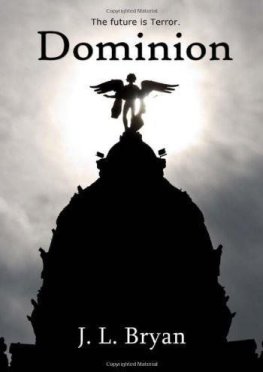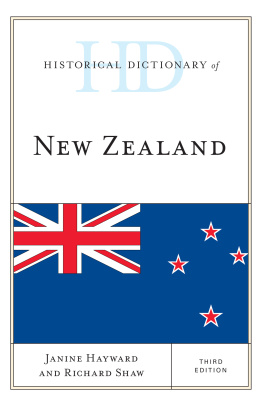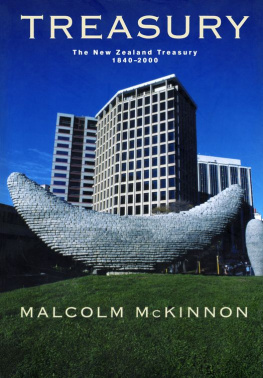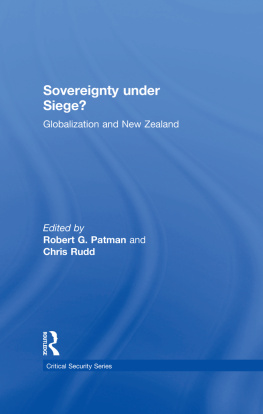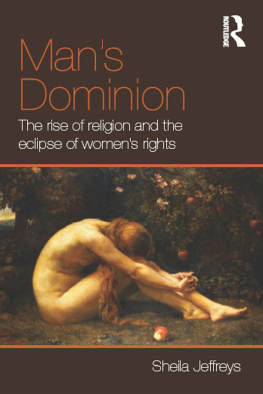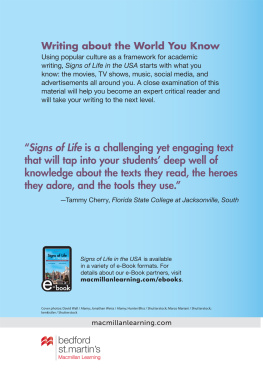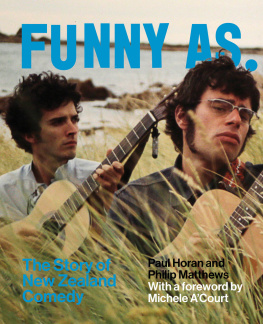The Dominion of Signs
The Dominion of Signs
Television, Advertising, and Other New Zealand Fictions
Nick Perry
First published 1994
This ebook edition 2013
Auckland University Press
University of Auckland
Private Bag 92019
Auckland 1142
New Zealand
www.press.auckland.ac.nz
Nick Perry 1994
This book is copyright. Apart from fair dealing for the purpose of private study, research, criticism, or review, as permitted under the Copyright Act, no part may be reproduced by any process without the prior permission of Auckland University Press.
eISBN 978 1 86940 687 5
Publication is assisted by the Literature Programme, Queen Elizabeth II Arts Council
Distributed outside New Zealand by Oxford University Press
For Kate and Lisa
Contents
Acknowledgements
There is a tendency for the authors partner to get relegated to a position of last but not least, providing tea, sympathy and keeping the kids out of the way. Jans contribution to this book goes beyond our shared addiction to the pleasures of coffee, criticism and wondering what our girls are up to. As an American for whom Mark Twain and Maya Angelou are part of a single tradition, she has spent more than twenty years persuading me of the deep continuities between affection and intelligence. I hope some of that lesson shows through.
The lesson I learned from an old friend and ex-colleague Roy Wilkie also began more than twenty years ago. At that time the (British) universities viewed popular culture with disdain and treated it with contempt. Yet Roy combined the analytic skills of a philosophical training with ardent support for Glasgow Celtic, jazz connoisseurship, a taste for science fiction and an enthusiasm for Z Cars. By his way of living it, he first suggested to me what a defence in depth of popular culture might actually look like.
AUPs Elizabeth Caffin, as befits the ideal editor, chose the ideal reader for the draft manuscriptone responsive to its general intent, perceptive on its limitations, and innovative on how those limitations might be minimised and that intent might better be realised. I have also been influenced by conversations with, or correspondence from, or comments by Ian Carter, John Deeks, Geoff Fougere, Roger Horrocks, Geoff Lealand, Bob Lingard and Ann Poulsen. Roger Horrocks was also very helpful in obtaining video graphic prints. Thanks to Metro magazine for granting permission to reproduce a double page spread from their June 1988 issue, and to Toyota New Zealand and the BBQ Factory for the use of images from their commercials. Every effort was made to obtain consent for the use of the images and illustrations featured in this book, but replies were not always received.
I would also like to thank Kate and Lisa for reasons which should be evident in Chapter One, and Mr R. G. Kitchen and Mr C. R. Smaill for reasons which are made clear in the books closing pages.
Gaynor van Beurden converted the text into WordPerfect and continued to tolerate my anachronistic allegiance to a word processing program that is almost as ancient as our family car.
Preface
has its origins in Common Coinage: Telethon and Cultural Criticism in New Zealand, Landfall, 149, 1984, pp.89-103, and Channel Vision, the opening lecture in the Auckland University 1987 Winter Lecture Series, The Mass Media: Threats and Opportunities, convened by Roger Horrocks. The present version is a revised and extended version of Cinderella and the Silver Mercedes as published in David Novitz and W. E. Wilmott (eds.), Culture and Identity in New Zealand, (1989) Wellington, Government Print. The initial version of Chapter Three was a response to a request to write something on New Zealand for the Japanese Popular Culture Association and was subsequently presented at a conference on Post Colonial Formations and Cultural Policy at Griffith University, Queensland, in July 1993. Chapter Four is based on a presidential address to the Annual Conference of the Sociological Association of Australia and New Zealand at the University of New England, Armidale, N.S.W., July 1986. It subsequently appeared under the present title in Landfall, 164, 1987, pp.462-73. A version of Chapter Five was published in Sites, 21, 1990, pp.113-27. Chapter Six made its first appearance in Antic, 4, 1988, pp.109-18. Under the title of Peripheral Visions, an early version of Chapter Seven was part of a seminar series at the Stout Research Centre, Victoria University of Wellington, in June, 1985. It was subsequently published under the title it has in this book in Islands, 38, 1987, pp.161-77. In its present form it also includes material from the previously mentioned 1984 Landfall essay. Chapter Eight draws on two essays: Being There, Being Here and Being Pakeha in Sites, 13, 1987, pp.32-36, together with a review of Theory K published in the Listener of 13 June 1987. The latter appeared under the heading In Pursuit of Excellence but was submitted as From Breathless to Deathless. My thanks for permission to use the material in this book.
ONE
Introduction
Does the Book Stop Here?
We have two teenage daughters, a rabbit hutch, about 2000 books, and a ten-year-old Honda Civic (we lost the rabbit and sold the BMW). The books, car and hutch add an idiosyncratic flavour to that otherwise generic mixture of embarrassment and affection with which offspring view their parents. Our no-longer-children children see this particular combination of icons and their owners as not-quite-relics; as outmoded but not yet usurped. They recognise that at times the elements of this assemblage can and do still function, have value, are even necessary. The tone of this acknowledgement is, however, not matter of fact (or grudging or generous, for that matter). It is instead exasperated and charitable and sardonic, and all of these at once.
This mobile and plural response to a more obviously archival form of life does not just signal the practice of lives being formed. It also measures the distance between a literary-based version of what culture might mean and the present state-of-the-art amongst our daughters and their friends. For them, the literary in its various forms is understood as incidental tributaries of the main channel. Yet they all began to read before they were a year old. Not books, of course, but rather the intimate pattern of parental gesture and expression, the markers and entrances to the storehouses of language and speech, the cultural distribution of furniture within a room. And of course television. An enduring and still vivid memory that I have of our first-borns first year was of entering the lounge one day and seeing her sitting on the floor with her back towards me, cross-legged, straight-backed, fully absorbed and attentive as the commercials made their familiar pitch on the small screen. In my mind, then as now, this common-enough representation of domestic life spontaneously and instantaneously interlocks and overlaps with another image. It comes from a news photograph taken during the campus struggles of the sixties. In the left-of-centre foreground a single, vulnerable figure sits, back to camera, cross-legged, straight-backed but loose-limbed, and facing a uniform and anonymous phalanx of helmets, riot-shields and guns. They fill the middle ground and are advancing slowly towards the figure, the photographer and by implication the person viewing the picture.


